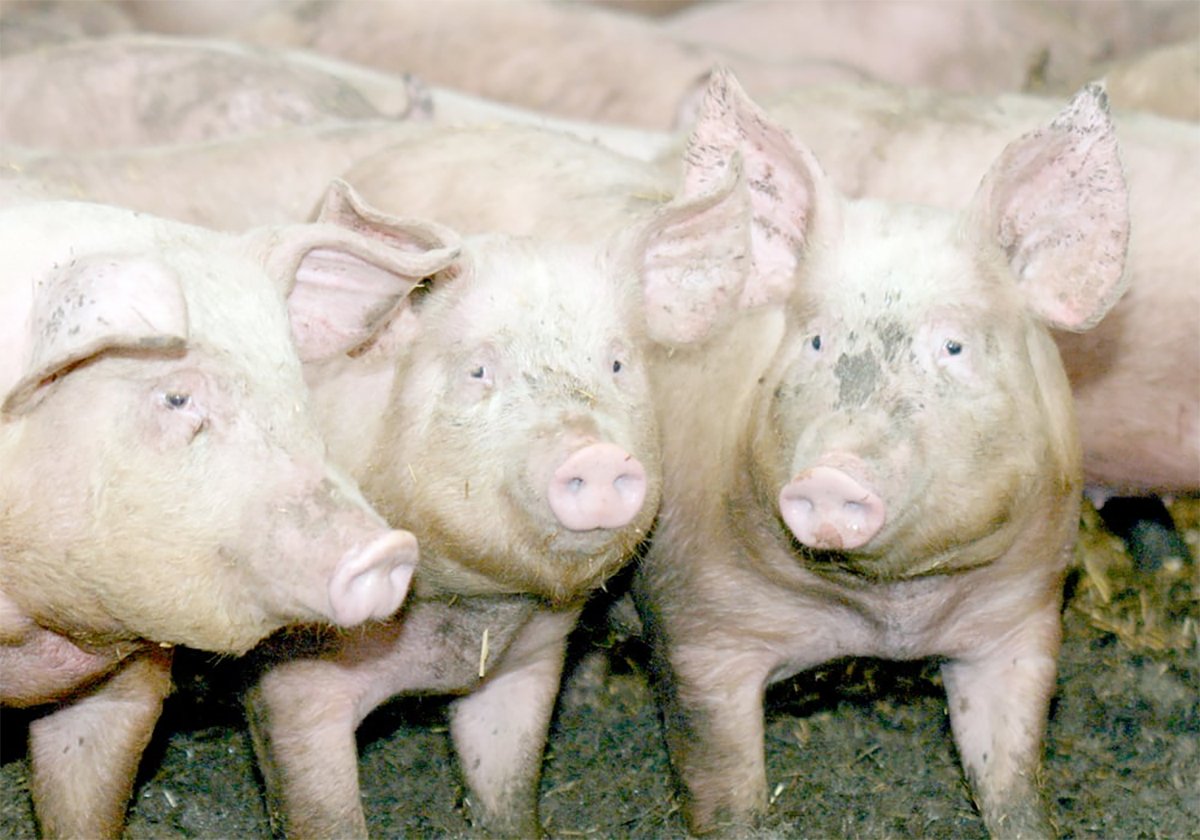Agriculture is shedding chemical and bacterial contaminants into the water supply, according to a $5 million, five-year Alberta study.
Released Jan. 23 in Calgary, industry leaders called the study a good start rather than a condemnation of how they are doing on their operations.
“This report is a report card for farmers,” said hog farmer Doug Hall of Airdrie. He is also chair of the land committee for the Alberta Pork Producers Development Corporation, which has made environmental care its research priority this year.
Finding farm chemicals and bacteria-like fecal coliforms in the rural drinking water supply has reemphasized the need to focus on care of the environment and clean up of farms.
Read Also

The Western Producer Livestock Report – November 13, 2025
Western Producer Livestock Report for November 13, 2025. See U.S. & Canadian hog prices, Canadian bison & lamb market data and sales insights.
“It encourages us to do the research and development,” said Hall.
Funding for this project came from the Canada-Alberta Environmentally Sustainable Agriculture Agreement, as well as Agriculture Canada and provincial departments of agriculture, environment and health.
The study concluded water quality is generally good but there are specific areas of concern, said Bruce Paterson of the provincial irrigation branch. He presented the study findings at a press conference.
The study focused on finding chemicals like fecal coliforms, nitrogen, phosphorus and herbicides in farm wells, dugouts, irrigation canals and streams. The study didn’t have enough resources to thoroughly check rivers and lakes.
Water quality degradation from agriculture is highest in those areas with higher livestock densities or crop land using greater amounts of fertilizer and pesticides.
Contaminant levels for human and livestock drinking water were often exceeded when fecal coliform bacteria from agricultural sources were found in surface water and irrigation systems. It was noted fecal coliform can also by generated by non-agricultural sources.
Among the 824 farmstead wells tested in the last five years, results showed 32 percent of well water exceeded drinking water guidelines. About six percent of the wells had fecal coliform while 92 percent of the dugouts showed detectable levels of coliform. Counts rose sharply during spring runoff.
Fluoride, arsenic, zinc, selenium, manganese and lead were also found in some wells.
In the 112 dugouts tested in 1994, 92 showed bacterial coliforms. Of those, 76 had fecal coliform, which can lead to giardia and cryptosporidium.
Health officials have long recommended all water be treated before domestic use. Unfortunately the study showed 42 percent of farm families surveyed don’t treat or test their drinking water.
“It was something they hadn’t really thought of,” Paterson said.
All drinking water should be tested and treated with chlorine, ozone, filtration or distillation.
When orders to boil water have been issued to communities in the last year, considerable blame has been laid on feedlots and hog farms. The study did not focus directly on intensive livestock production but said continued monitoring is needed.
Big problem with manure
Alberta feedlots handle more than two million animals per year. Each animal produces about a tonne of manure during its stay. Feedlot manure contains high levels of nitrogen, phosphorus, potassium, sodium, organic material and bacteria.
When large amounts of manure are spread, farmers are advised to test soil regularly and apply nutrients according to crop needs. There are cases where applications exceed the limits and cause nitrate and phosphate overloads.
The study recommended moving livestock away from waterways and giving them clean water from a trough rather than allowing them to wade into lakes, streams or dugouts.
Besides bacterial contaminants, researchers started looking for residues from chemical fertilizers and herbicides. These were first detected in ground water in 1991.
Nitrogen and phosphorus from farm runoff often exceeded water quality guidelines, according to the study. Too many nutrients in streams cause excessive algae growth. The growth takes up the oxygen and chokes fish and other aquatic life.
The surprise for researchers was the amount of herbicide residue in water supplies.
“The potential of herbicides to move through the soils is surprising,” said Paterson.
Even when herbicides were applied in the proper rates it was found after a heavy irrigation they leached through the soil quickly and into shallow ground water.
“Many of the herbicides appear to be staying in the soil for relatively long periods of time,” said Paterson.
“The numbers are small but what concerned us is that they are moving through at all,” said Paterson.
“Considerably more work will be started on that to try and understand what is happening.”
Investigations of two different soil types at Lethbridge and Lacombe revealed pesticides had moved several metres into shallow ground water.
The study recommended more research, better education and enforcement of existing rules to clean up the water supply.















